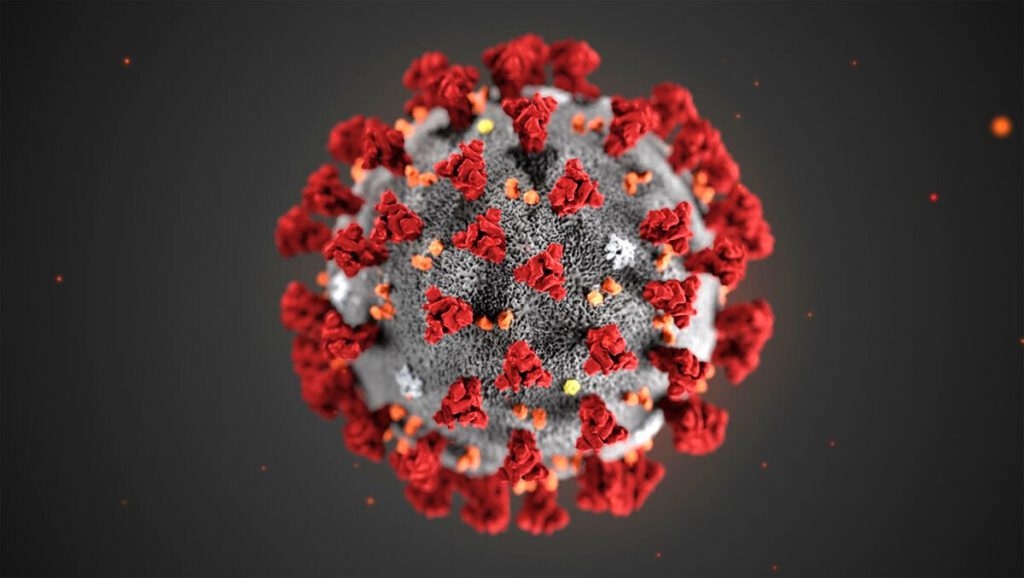Report Shows How Social Factors Affect COVID-19
How race, income and other factors affect your chances of getting the disease.
A new report look at how race, income and other factors have influenced who is more likely to get COVID-19 and shows that the picture is far more complicated than first thought. Indeed, at this point it is white people in the county who are suffering the highest case levels.
The report comes from faculty at the Medical College of Wisconsin, UW-Milwaukee, and public health employees from various health departments throughout the county. This group includes people that develop the county’s weekly local COVID-19 data report. The report breaks down the data by race and ethnicity, income and social vulnerability and whether someone is an essential worker. In all categories the incidence of diseases has changed greatly since the early days of the pandemic.
Social Vulnerability
The researchers mapped data at the level of census tracts onto the measures in the CDC’s Social Vulnerability Index (SVI). This index uses 15 “social factors” to determine the social vulnerability of a population. These factors include the level of poverty, crowded living quarters and car ownership.
Early in the pandemic, it was people with the highest levels of social vulnerability who were experiencing the most cases of COVID-19, but as the pandemic went on, that changed. When the July surge hit, it was no longer the people with the highest social vulnerability experiencing the most cases of COVID-19, but rather people with the second lowest social vulnerability — the low medium group. All four groups are now seeing a spike in cases but the low medium group still ranks first, followed by the lowest or least vulnerable group. Both groups now have rates higher than for the more socially vulnerable.
Household Income
Household income is one indicator that has, mostly, not changed throughout the pandemic. Through every surge, those in Milwaukee with the lowest median household income have had the highest number of cases, and hospitalizations. In the beginning this group had the most deaths by a long-shot, but recently, the income group with the highest number of deaths has fluctuated and all income quartiles have seen a spike in death.
However, when looking at the rate of deaths per 100,000 people, it is people in the highest median-household quartile that are currently experiencing the highest rate of death. Something that also occurred during the surge in May.
Essential Workers
Another population the report looked at was essential workers. The report measured what percentage of a census tract worked in jobs classified as essential.
When the pandemic first hit, areas with the highest percentage of essential workers had the highest cases, hospitalizations and deaths.
But a shift occurred during the July surge, when areas with the least essential workers began to spike and by September passed the case level for census tracts with the most essential workers. Since then the two groups have traded the lead for most cases. But again, all four groups have seen the rate spike in the last month or two.
Race and Ethnicity
Early on, the county’s Black population was very hard hit, with the highest case numbers and hospitalizations and deaths. As the pandemic went on this changed. The county’s Hispanic population started to show a rate of disease much higher than other groups. More recently the county’s white population began to see the most cases, hospitalizations and deaths. But Black people are still experiencing the highest rate of hospitalization.
Surges Show Changing Dynamics
Mid-summer is when a lot of things changed. It’s when the county’s white population passed the Hispanic population in case numbers and those with the highest social vulnerability were no longer experiencing the highest case rates and deaths.
But one thing that is the same is that the burden of disease is going up during this latest surge: everyone is seeing a spike in cases. In that sense we are all equal, even though the case rates have varied over time depending on who we are and what neighborhood we live in.
You can read the full report here.
More about the Coronavirus Pandemic
- Governors Tony Evers, JB Pritzker, Tim Walz, and Gretchen Whitmer Issue a Joint Statement Concerning Reports that Donald Trump Gave Russian Dictator Putin American COVID-19 Supplies - Gov. Tony Evers - Oct 11th, 2024
- MHD Release: Milwaukee Health Department Launches COVID-19 Wastewater Testing Dashboard - City of Milwaukee Health Department - Jan 23rd, 2024
- Milwaukee County Announces New Policies Related to COVID-19 Pandemic - County Executive David Crowley - May 9th, 2023
- DHS Details End of Emergency COVID-19 Response - Wisconsin Department of Health Services - Apr 26th, 2023
- Milwaukee Health Department Announces Upcoming Changes to COVID-19 Services - City of Milwaukee Health Department - Mar 17th, 2023
- Fitzgerald Applauds Passage of COVID-19 Origin Act - U.S. Rep. Scott Fitzgerald - Mar 10th, 2023
- DHS Expands Free COVID-19 Testing Program - Wisconsin Department of Health Services - Feb 10th, 2023
- MKE County: COVID-19 Hospitalizations Rising - Graham Kilmer - Jan 16th, 2023
- Not Enough Getting Bivalent Booster Shots, State Health Officials Warn - Gaby Vinick - Dec 26th, 2022
- Nearly All Wisconsinites Age 6 Months and Older Now Eligible for Updated COVID-19 Vaccine - Wisconsin Department of Health Services - Dec 15th, 2022
Read more about Coronavirus Pandemic here
MKE County
-
J.D. Vance Plays Up Working Class Roots, Populist Politics in RNC Speech
 Jul 17th, 2024 by Graham Kilmer
Jul 17th, 2024 by Graham Kilmer
-
Ron Johnson Says Free-Market Principles Could Fix Education
 Jul 17th, 2024 by Graham Kilmer
Jul 17th, 2024 by Graham Kilmer
-
RNC Will Cause Some County Services To Be Moved to Wauwatosa
 Jul 12th, 2024 by Graham Kilmer
Jul 12th, 2024 by Graham Kilmer























It’s not race that influences who is more likely to get COVID-19, it’s racism.
Closely connected to the social factors are the political factors. At the pandemic’s outset last winter, everyone made mistakes. Many were inevitable. That is much less true today. Just look at the map of the United States.. The single most important indicator related to control of the spread is whether Trumpism, Trump’s sycophants, and the Fox News watching and lie-believing base are an important political force in that state. Unfortunately, Wisconsin, primed for all of it with a decade of Walkerism, is in that bad group, as the close election and the ongoing pro-Trump demonstrations indicate.
The link between the social and political indicators are also the fruits of the state’s rigid segregation patterns and the “otherization” of anyone who wasn’t a white, suburban/rural, conservative Christian. In the minds of those in power, Ron Johnson being the most visible example, members of these groups, “the others,” are what can be called “surplus populations.” In Johnson’s Trump-like worldview, these are the people who had to “take one for the team,”in order to “keep the economy open.” To Republicans like Johnson and the reactionary base, these groups were either not very economically productive, or, don’t worry, there are lots more where they came from. Empathy, at least what is left of it, is restricted to our team.
At some point, this pandemic will be in the rearview mirror. There will be lots of people, including virtually every Republican official, who are going to hope that we have short memories. And like Saint Peter at the crucifixion, they will also claim that they barely knew who Donald Trump, their former Savior, was. “I heard of him, but didn’t know much about him. Why do you ask?”
Yup, as of last week, 19 of the top 20 counties in Wisconsin for percent of COVID positives, were counties that Trump won.